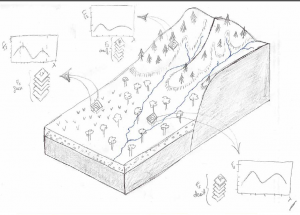VEGETATION FLUORESCENCE
Vegetation fluorescence can be used to infer the photosynthetic activity of natural and managed ecosystems. This information is critical to gain understanding of carbon exchange between the biosphere and the atmosphere and to improve predictions about how vegetated ecosystems contribute to the carbon and water cycles.
Main activities regard:
•dedicated experiments at field and airborne level, modelling studies
•development of innovative retrieval algorithms for space applications

New! Experimental evidence show that the two peaks of the chlorophyll fluorescence spectrum can be accurately mapped from high-resolution radiance spectra and that the signal is linked to variations in actual photosynthetic efficiency (Rossini et al., 2015).
New! Development of a new method for the retrieval of the full sun-induced fluorescence spectra in the context of the FLEX mission (Cogliati et al., 2015)
The European Space Agency FLuorescence EXplorer (FLEX) mission, a candidate to the 8th Earth Explorer program, is explicitly optimized for detecting the sun-induced fluorescence emitted by plants. FLEX will provide a new way to monitor vegetation at the global scale with a reasonable spatial resolution of 300m.

Current and past ESA funded field campaigns and projects:
2012 – Hyplant – HyFLEX campaign
2012 – Field spectroscopy – S-Fluorbox
2014 – Italy campaign 1 – Italy campaign 2
5,563 total views, 1 views today
